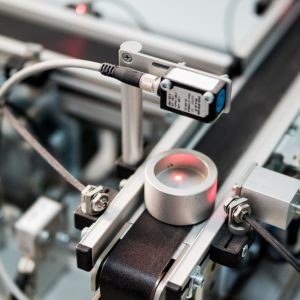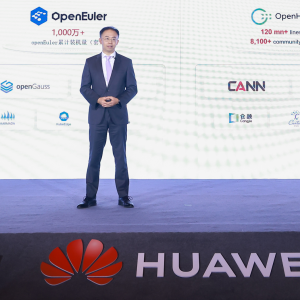Sun and long-time partner and Sparc system competitor, Fujitsu Ltd, have agreed to develop a future Sparc processor and associated server platform in the post-UltraSparc-IV era. McNealy announced the alliance as part of Sun’s quarterly Network Computing announcements, and stressed that Sun was continuing its work on the Niagara and Rock multithreaded chips.
Last October, the Nihon Keizai Shimbun, Japan’s business daily, said McNealy was meeting with Fujitsu chairman Naoyuki Akikusa to hammer out exactly such an agreement, and said that the two companies would be combining their high-end server lines. At the time, Sun stepped on the story, issuing a statement that said the two companies were indeed having discussions about what they might do and that nothing had been decided.
Back then we predicted the high-end Sun Fire servers and the future Millennium UltraSparc-V processors and their Eagle servers would be sidelined in favor of future PrimePower 2500 servers from Fujitsu-Siemens using Sparc64 VI and Sparc64 VII processors from Fujitsu. We speculated Sun and Fujitsu would jointly develop future processors, which will be made by Fujitsu in Japan, not Texas Instruments, Sun’s current chip fabrication partner. As it turns out, this is exactly what will happen.
Two months ago, Sun killed the Millennium chips even though Sun had done a substantial portion of the development for them because the radical design would provide benefits, but would be costly and disruptive to Sun’s customers, who just want cheap big iron. Once Sun shook up the executive ranks a few weeks ago – and specifically when David Yen, David Yen, executive vice president in charge of Sparc chip development who took over Sun’s server development – the company had two competing Sparc designs, and one of them had to go for economic reasons.
With Fujitsu already committed to creating 128-way Sparc64-VI and Sparc64-VII processors that could do the big SMP, low-threaded applications and Sun concentrating on chips with many cores per chip and many threads per core, it just didn’t make much sense for Sun to foot the bill for future monolithic UltraSparc chips. In hindsight, the reason why Sun killed Millennium was that it knew it had Fujitsu supplying its future chips and monolithic systems.
Back in October, we explained the people inside Sun were arguing back and forth about what the best course of action was for Sun, and based on the executive reshuffling, it is clear who lost what arguments and who won. From outside Sun, it was obvious that Sun could keep working on its Gemini entry and Niagara midrange throughput computing server processors, endorse the 64-bit Opteron on midrange products running Solaris and Linux, and rebadge and resell Fujitsu-Siemens PrimePowers at the high-end.
It was also obvious that no matter what course Sun took, it would support its existing Sun Fire line for a very long time and will continue to roll out UltraSparc-IV processors next year and the year after for customers who want to stay with the Sun Fires.
This is exactly, as we now know, what the plan is. Sun has buried the hatchet with Microsoft, when – for years – the only way Sun would bury a hatchet with Microsoft was in its corporate head, and if it can do that with Microsoft, it could put away the katana for Fujitsu-Siemens.
These are not hard plays to call, nor are they the only plays to call. What is extremely difficult is taking a simple plan that Sun’s server strategy now embodies and creating those product lines and selling them. It’s going to all be about execution – not the kind with sharp axes and swords, but with sharp engineers and sales people – from here on out.
As any CEO would do, McNealy put the best possible face on the expanded Sun-Fujitsu alliance, saying that it was an acceleration of what is probably Sun’s longest running partnership. He said that the two companies would collaborate on a future processor code-named the Advanced Product Line, or APL, which will go down in history as the most boring code-name for a chip and its related server.
APL products are expected in mid-2006, said McNealy. He also said both companies would resell the others’ current Sun Fire and PrimePower product lines and were figuring out how to do that. This is all about choice and a larger bucket of R&D, said McNealy. He added that both companies would, by selling each others’ product and having their sales teams and resellers push these expanded product lines, have more feet on the street and be able to chase more opportunity.
This must be that new math executives use from time to time. If anything, Sun and Fujitsu are seeking to reduce the aggregate amount of money they collectively spend on their respective UltraSparc and Sparc64 chip development and the server development that is related to them. And they want to carve the world up into accounts so they are working together to sell a single, more profitable server line against products from IBM and Hewlett-Packard in the Unix space.
There is no profit in Sun competing against Fujitsu-Siemens in the server space when prices keep dropping each year for a given amount of computing power and costs to do the next iteration of chip and server keep going up. McNealy said he didn’t expect any cannibalization of the Sun and Fujitsu-Siemens sales, which is probably true. Fujitsu in Japan and Siemens in Germany have as tight a lock on their Sparc customers as Sun does on its own in North America.
After being repeatedly pressed by Wall Street and IT analysts on the call hosted by McNealy today – journalists never quite get through on these calls – about details on this APL, Andy Ingram, vice president of Scalable Systems at Sun, stepped in and copped to what the Sun-Fujitsu deal is.
The APL chip is not the Rock chip, and it would, in fact, be predominantly designed by Fujitsu and would be manufactured by Fujitsu. We are freeing up our resources for the radical CMT designs and we will be partnering for more traditional SMP systems, he said. He added that the APL processor and APL servers would have some throughput computing concepts, but much less aggressive than the concepts embodied in the eight-core, 32 thread Niagara chip due sometime next year or in late 2005 or early 2006.
McNealy said that Sun has taped out on the Niagara chip, has the UltraSparc-IV+ in first silicon running Solaris and is working on a kicker to the UltraSparc-IIIi – the latter two which use 90 nanometer chip making processes. Niagara may as well – Sun is not saying yet. Our best guess is that Niagara will run at 1.2GHz, the current top-end speed for the single-core UltraSparc-III and dual-core UltraSparc-IV processors.
The specs of the Rock processor have not been detailed at all, except that it will deliver 30 times the performance of this baseline UltraSparc-IIi processor running at 650MHz. Given that Niagara is 15 times as powerful as this baseline, that would seem to imply that Sun will double the clock speed, double the core count, or double the thread count of Niagara chips to create Rock processors.
Doubling the core count seems like the easiest course of action, especially if Sun is moving from 90 nanometer to 65 nanometer processes, which cuts the chip area in half to put in a given set of transistors. Such a move would allow Sun to double the number of cores, double the performance, keep the clock speed constant, and keep the chip package of Rock about the same size as Niagara.
As for the APL systems, McNealy said Sun and Fujitsu would deliver machines that span up to the current 128-way SMP configurations that Fujitsu-Siemens sells as the PrimePower 2500, and that number is probably not a coincidence. He also said Sun would sell a complete line of APL products, spanning from entry through midrange up to high-end servers.
According to the latest Fujitsu-Siemens roadmap, the Sparc64-VI processor is due at the end of 2005 or early 2006. The Sparc64-VI chip will be Fujitsu’s first dual-core processor, and it will be implemented in a 90 nanometer copper/SOI process and made in Fujitsu’s fabs in Japan. The chip will have 128KB of on-chip L1 data/instruction cache per core, 6 MB of on-chip L2 cache memory shared by both cores, and an initial target speed of 2.4 GHz. Eventually, the Sparc64-VI chip will span a range between 2.1GHz and 2.6GHz. At 2.4GHz, the PrimePower servers using the Sparc64 VI processors will offer about three times the performance as the current PrimePower servers, which use 1.3GHz and 1.35GHz Sparc64-V processors made using a 130 nanometer copper process.
This sounds suspiciously like the joint APL platform Sun is talking about. Sun and Fujitsu are not exchanging equity as part of this alliance, but what seems clear is that Sun is for all intents and purposes taking in future Fujitsu-Siemens gear on an OEM basis while selling Fujitsu-Siemens its own future entry Sparc and multicore systems on an OEM basis. If Fujitsu and Siemens are married as part of their alliance several years ago, Fujitsu and Siemens and Sun are living in Utah in one of them open marriages. It will be interesting to see if it works out. All of the parties involved are extremely motivated by enlightened self-interest to make it work.
McNealy said Sun would still sell UltraSparc-III and UltraSparc-IV processors for a long, long time. This stuff hangs around longer than you’d like sometimes, he said, adding there are still customers trying to get 400 MHz UltraSparc-II processors because they don’t want to upgrade their old machines.






